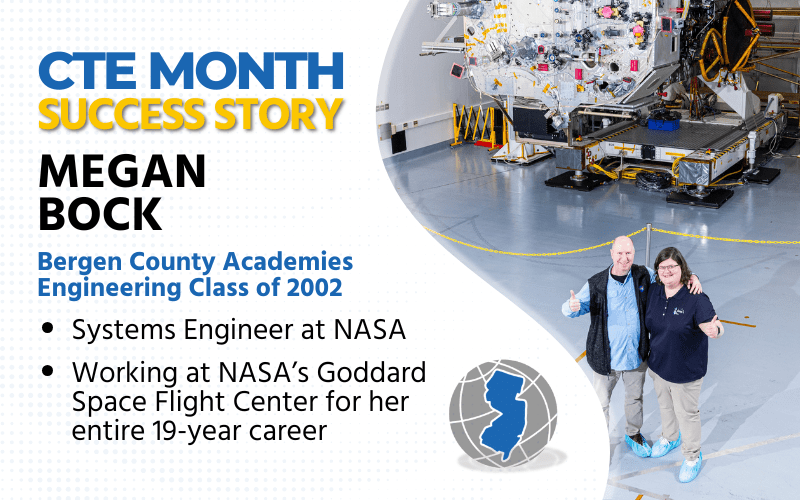
Megan Bock said attending the Bergen County Academies taught her how to think critically, be creative and not shy away from difficult problems. “These are all cardinal principles of my career today,” said Bock, a systems engineer for NASA.
Bock explained that systems engineers at NASA are technical leaders who take a comprehensive view of complex missions, breaking down large problems, such as entire spacecraft or payload designs, and coordinating across multiple science and engineering disciplines to ensure all components work together seamlessly. She said throughout the entire mission lifecycle – from concept to operations – systems engineers manage requirements, conduct trade studies, monitor technical resources like mass/power, and perform verification testing to ensure the final system meets the needs of its stakeholders.
“While project managers focus on cost and schedule constraints, systems engineers act as the independent technical authorities responsible for the overall technical integrity of the mission,” Bock explained. “Systems engineers collaborate closely with project managers to enable mission outcomes that successfully balance technical performance, risk and programmatic constraints. The role frequently requires communicating across engineering and science disciplines as well as to internal and external stakeholders.”
Bock has been at NASA’s Goddard Space Flight Center for her entire 19-year career. The first 13.5 years were as a contractor with various companies, and the last 5.5 years as a civil servant. She began working for the space agency after preparing through her educational journey, which began at Bergen County Academies. After graduating in 2002 from the Engineering program, she went on to the University of Maryland, where she earned both a bachelor’s and a master’s degree in Aerospace Engineering.
To date, Bock has supported roughly a dozen space flight programs spanning Earth Science, Technology Development and Crewed missions. A highlight includes serving as the deputy mission systems engineer for On-orbit Servicing Assembly and Manufacturing (OSAM-1), a technology demonstration mission to refuel and relocate Landsat-7 and perform in-space assembly of a structure. Another is managing the design, integration and test as the mechanical systems engineer for roughly one-quarter of the space shuttle payload flown in support of the final mission to service the Hubble Space Telescope.
“Fun fact: The camera used to film the IMAX movie ‘Hubble’ was flown in my portion of the payload; I got to help design, build and test the brackets used to hold it in place,” Bock added.
Bock said even with so many professional highlights throughout her career, what she enjoys most is the people: “I am privileged to work in a place full of our nation’s – and in some cases, the world’s – best. To be able to learn from them daily is truly a gift.”
Bock’s appreciation for learning is something that initially drew her to Bergen Academies and has remained with her throughout her education and her impressive career.



